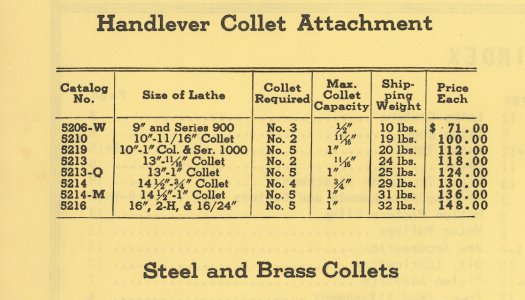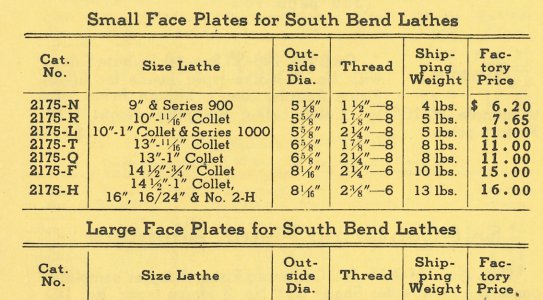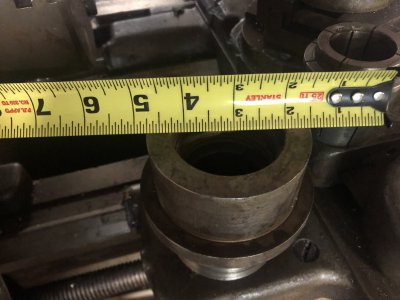Okay, here’s the latest.
How many of you noticed the apron gear change handle was not there? Yeah, me neither.

I found the handle, and it appears to have cracked across the shaft of the idler gear shifter. Of course, that part seems to be unobtainium for the 14-1/2–old parts list show it as “NLA” and don’t even provide a part number.
At least it’s in neutral.
So, what to do? I could machine using the lead screw at 224 tpi—about .005 per revolution. But of course I have also lost access to the powered cross-slide. I’ll need to figure out 1.) what caused it to break, and 2.) what repair is possible. Is it cast iron? The fracture surface suggests it. Maybe I could drill down the shaft, install a Grade 8 bolt, and then braze around the outside. I’m not sure I’d trust brazing by itself. I have a buddy who I do trust with brazing and welding.
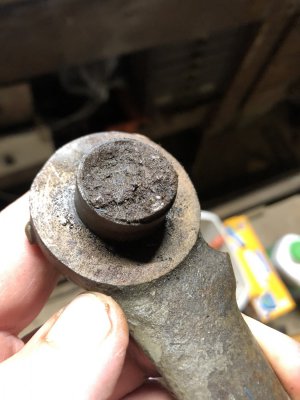
The belt must be replaced. It sorta works but it’s not tight enough to drive higher speeds. But I was able to test the QCGB, the back gears, the reverser, and the speed selector in the gearbox under power.
The weird collet chuck has collets for 5/8, 3/4, 7/8, 1, 1-1/16 (two of them), 1-1/8, 1-1/4, and it will hold 1-1/2 without the inner part. I found the spanner, and it is definitely shop-made.
The micrometer stop is frozen up—I doubt it was ever used. I can fix that. And the saddle clamp seems to be missing—I can fix that, too.
The spindle is definitely the old style 1-1/8” through bore with 2-1/4-6 nose threads intended for 4c collets. The good news is I have sourced what appears to be the correct drawbar and closer, and I found the thread protector in the pile. All the chucks and plates install happily, though the 4-jaw is a heavy thing.
I found a shop-made fixture plate plus the factory face plate, both of which are 7” in diameter. I may use the shop-made as a mule to carry a 12” plate.
I also found a range of scraps and cutoffs, so I’ll be able to play without sourcing new stock.
Finally, I learned that Uncle bought it from a guy who used it to repair airplane propeller hubs. Both of them were colleagues teaching airplane mechanics at the local trade school. I’ve inspected the ways again and they appear to be unworn.
I’ve reserved a tilt-bed trailer for the move—targeting Thanksgiving weekend.
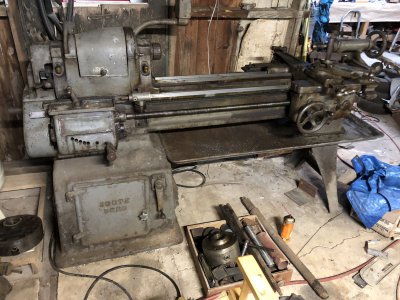
Rick “runs fine on 120VAC, but with no load” Denney


